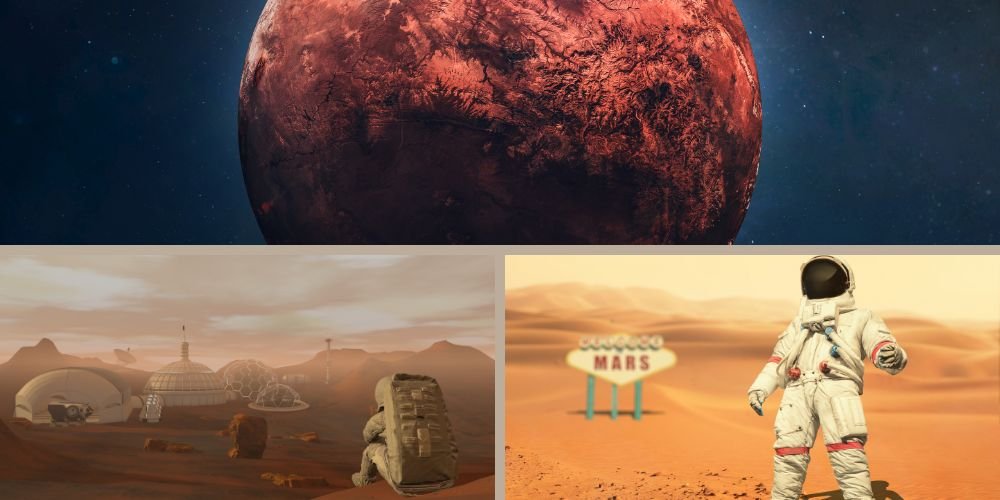Space missions to Mars represent the pinnacle of human ambition in exploring the mysteries of the cosmos. This article delves into the historical context of Mars exploration, the evolution of space missions targeting the Red Planet, the scientific objectives behind these endeavors, and the future outlook for bridging the gap between Earth and Mars.
The Historical Context of Mars Exploration
Mars has captivated human imagination for centuries, with ancient civilizations observing its distinctive reddish hue in the night sky. However, the scientific exploration of Mars began in earnest with the advent of telescopic observations and the development of space exploration technology.
Telescopic Observations – Mapping the Martian Landscape
Historical astronomers, such as Giovanni Schiaparelli and Percival Lowell, made early telescopic observations of Mars, leading to the mapping of its surface features. Schiaparelli’s descriptions of “canali” sparked fascination and controversy, as some interpreted these as artificial canals rather than natural features.
Mariner and Viking Missions – Pioneering Robotic Exploration
NASA’s Mariner and Viking missions marked significant milestones in robotic exploration of Mars. Mariner 4, in 1965, provided the first close-up images of Mars, dispelling the notion of an Earth-like atmosphere. In the late 1970s, the Viking program included the first successful landers, transmitting images and conducting experiments on the Martian surface.
The Mars Rover Era – Unveiling Martian Secrets
The evolution of space missions to Mars entered a new era by introducing robotic rovers designed to explore the Martian surface in unprecedented detail.
Sojourner, Spirit, and Opportunity – Early Rover Explorers
The Sojourner rover, part of NASA’s Mars Pathfinder mission in 1997, was the first rover to explore the Martian surface. It paved the way for the Spirit and Opportunity rovers, which landed in 2004 and conducted groundbreaking research, discovering evidence of past water activity and expanding our understanding of Mars’s geological history.
Curiosity – Advancing Rover Technology
NASA’s Curiosity rover landed on Mars in 2012 and represented a technological leap forward. Equipped with advanced scientific instruments, Curiosity has been exploring Gale Crater, analyzing rock samples, and searching for signs of past microbial life. Its mission has contributed valuable data to our understanding of Mars’ habitability.
The Current Landscape of Mars Exploration
Recent space missions have further elevated our understanding of Mars, combining orbital observations, lander technology, and advanced robotic explorers.
InSight – Probing the Martian Interior
NASA’s InSight mission, which landed on Mars in 2018, is designed to study the planet’s interior. Equipped with a seismometer and heat flow probe, InSight aims to unravel the mysteries of Mars’ geology and seismic activity, providing insights into the planet’s composition and history.
Perseverance – Seeking Signs of Past Life
Launched in 2020, NASA’s Perseverance rover is on a mission to search for signs of ancient microbial life and gather rock and soil samples for future return to Earth. Perseverance also tests advanced technologies, including the Ingenuity helicopter, which achieved the first powered flight on another planet.
Tianwen-1 – China’s Mars Exploration Ambitions
China’s Tianwen-1 mission, which arrived at Mars in 2021, includes an orbiter, a lander, and the Zhurong rover. Zhurong aims to study Mars’ surface composition, geology, and climate, marking a significant step in China’s space exploration aspirations.
The Future of Mars Exploration
As space agencies and private companies set their sights on ambitious missions to Mars, the future promises groundbreaking discoveries, technological innovation, and potential human exploration.
Mars Sample Return – Bringing Martian Samples to Earth
NASA and the European Space Agency (ESA) are collaborating on the Mars Sample Return mission to collect rock and soil samples from the Martian surface and return them to Earth. This mission, planned for the late 2020s, could provide unprecedented insights into Mars’ geological history and potential signs of past life.
Human Exploration – The Next Frontier
Numerous plans and proposals outline the potential of sending humans to Mars in the coming decades. Under Elon Musk’s leadership, SpaceX envisions the colonization of Mars. At the same time, NASA’s Artemis program, focused on lunar exploration, could serve as a stepping stone for future crewed missions to the Red Planet.
Terraforming and Sustainability – Long-Term Vision
Terraforming, the hypothetical process of transforming Mars’ environment to make it habitable for humans, remains a topic of scientific exploration and discussion. While challenging, the long-term vision includes establishing sustainable habitats and potentially altering the Martian climate to support human settlement.
Conclusion
Space missions to Mars have evolved from early telescopic observations to sophisticated robotic explorers and orbiters. The wealth of data has transformed our understanding of the Red Planet, revealing its dynamic geological history and raising questions about the potential for past or present life. As we look to the future, Mars exploration holds the promise of continued scientific discoveries, technological advancements, and, perhaps, the realization of humanity’s dream to set foot on the surface of another planet. Bridging the gap between Earth and Mars remains a monumental challenge. However, the ongoing pursuit of knowledge and exploration is propelling us closer to unlocking the secrets of the Red Planet.










